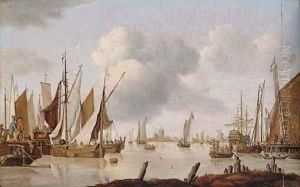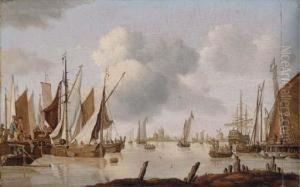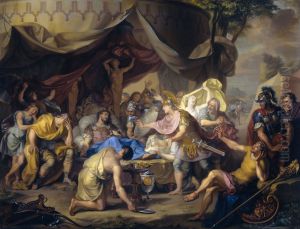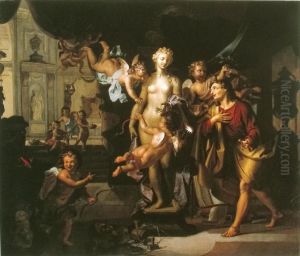Isaac Walraven Paintings
Isaac Walraven, born in 1686 and deceased in 1765, was a Dutch artist known for his contributions to the Baroque period, a time characterized by its dramatic use of light and shadow, detailed realism, and emotional intensity. While not as widely recognized as some of his contemporaries, Walraven's work nonetheless offers a fascinating glimpse into the artistic endeavors and stylistic developments of his time. His career offers insight into the broader movements within Dutch art during the 18th century, a period that saw a transition from the grandeur of the Golden Age to a more subdued and intimate portrayal of everyday life.
Walraven's oeuvre primarily consists of still life paintings, a genre that was immensely popular in the Netherlands during the 17th and 18th centuries. These works often featured an array of objects, from lavish displays of flowers and fruit to detailed depictions of household items, all rendered with meticulous attention to texture, color, and light. Through his paintings, Walraven demonstrated a masterful understanding of composition and an ability to imbue inanimate objects with a sense of vitality and presence. His still lifes are celebrated for their realism and the subtle interplay of light and shadow, qualities that reflect the influence of the Baroque style on his work.
Despite his talents, Isaac Walraven remains a somewhat obscure figure in art history, overshadowed by the giants of Dutch painting such as Rembrandt, Vermeer, and Hals. Little is known about his life beyond his artwork, and few of his pieces are prominently displayed in major museums or collections. However, his surviving works continue to be studied and appreciated for their beauty and technical proficiency. Art historians and enthusiasts who delve into Walraven's paintings are rewarded with a deeper understanding of the nuances of Dutch Baroque art and the rich tapestry of artists who contributed to its legacy.
In summary, Isaac Walraven's life and work encapsulate the enduring appeal of Dutch still life painting and the artistic virtuosity of the Baroque period. Though he may not have achieved the fame of his peers, his contributions to the art world are a testament to the depth and diversity of talent that flourished in the Netherlands during the 17th and 18th centuries. His paintings, with their exquisite detail and luminous quality, continue to captivate viewers, offering a window into the past and a reminder of the enduring power of art to evoke beauty and wonder.



